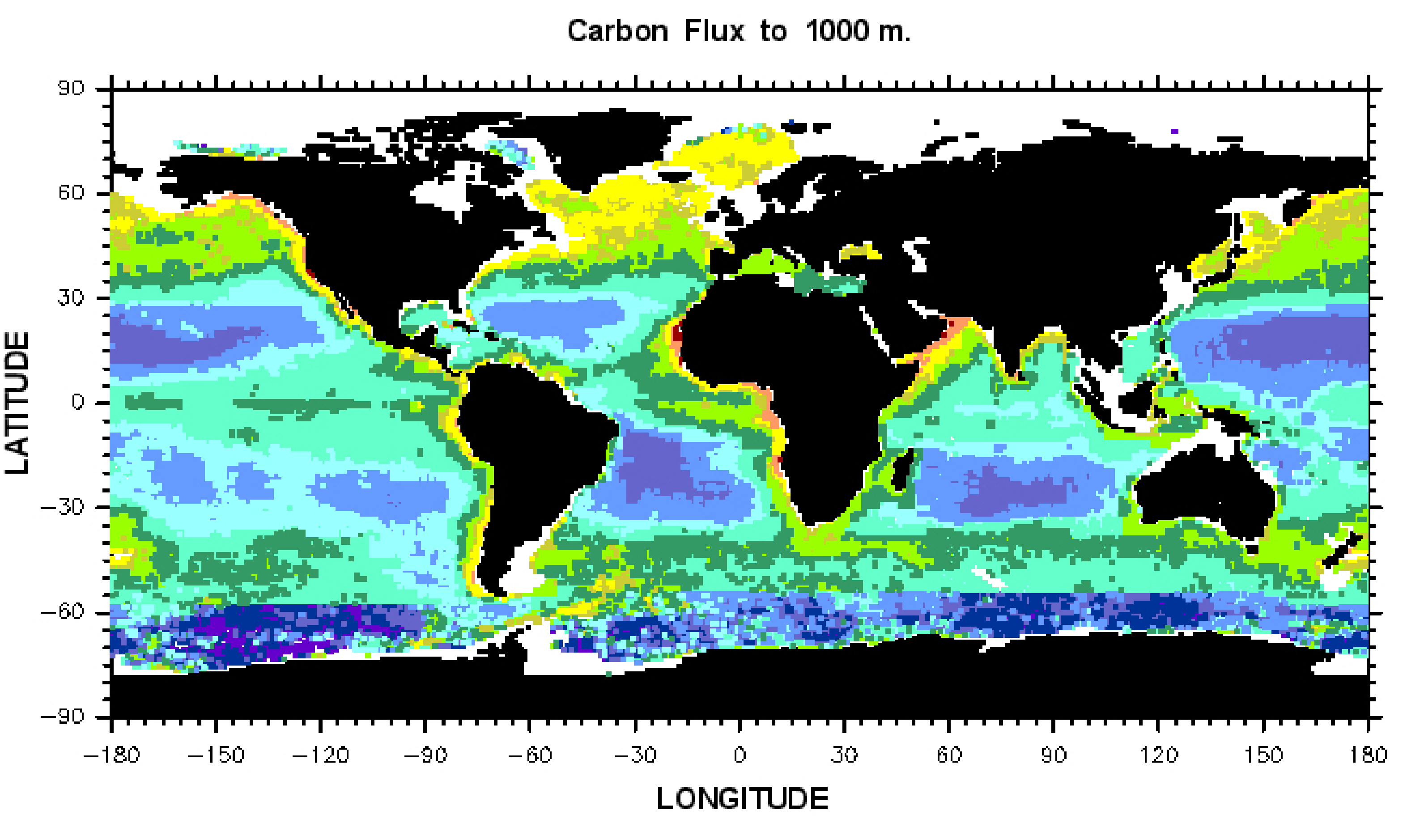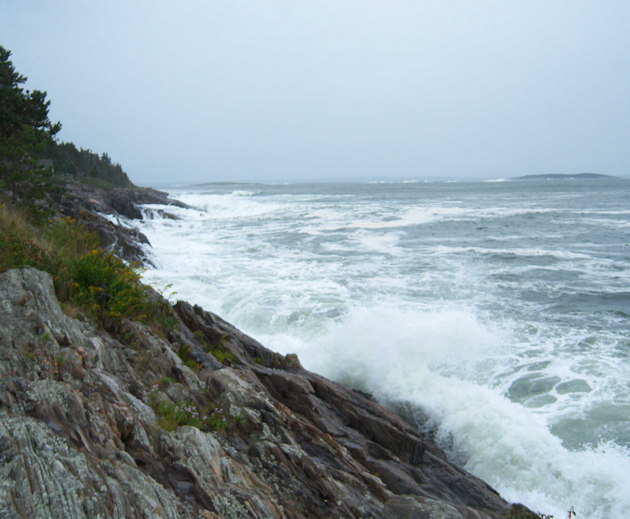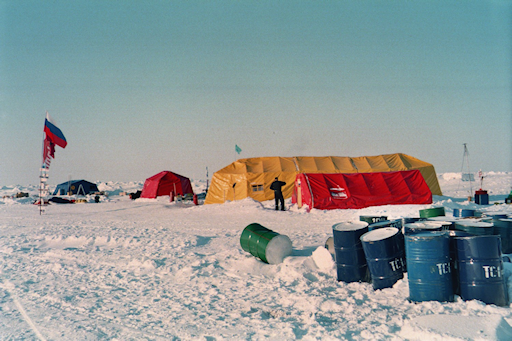LITERATURE
LITERATURE
To give the viewer a perspective of our long-term scientific efforts, we provide a listing of some of the important previous scientific publications. These are available either here (for those publications which are “Open Access”) or at the website of the respective scientific journal. We have grouped them by geographic region.

The global distribution of the amount of sinking productivity (per year and per square meter of sea-surface area) that reaches 1000 m depth in the oceans. (Figure by J. Christensen.)
earth ocean
All oceans of the earth have an overall commonality and connectivity. So under this EARTH OCEAN section, we list those publications that described an aspect of the entire oceanic system or that provided a view meaningful for all regional oceans.

Turbulence, generated by waves, storms, and strong tides, helps mix nutrients into the sunlit surface waters, which promotes high productivity in the Gulf of Maine. (Photo by J. Christensen.)
gulf of maine
The Gulf of Maine is a unique coastal sea with a strong physical connection to the North Atlantic Ocean but with a much more productive ecosystem. New England Oceanographic’s scientists have investigated several aspects of the Gulf and the some of the resulting publications are listed.

Conditions in the Arctic Ocean were investigated for several weeks near the North Pole where scientists were airlifted into this ice camp. In the view, the snow and sea-ice is about 4 feet thick and the ocean below is 12000 feet deep. (Photo by J. Christensen.)
polar oceans
Since the 1950’s, the United States government has had a strong interest in the oceans near both planetary poles. In the case of the Arctic Ocean, its exiting waters quickly reach the Nova Scotia and Maine coasts, so conditions in that Ocean impacts our Gulf of Maine. Some of the Polar publications done by New England Oceanographic’s scientists are listed.
1—-
1—-
